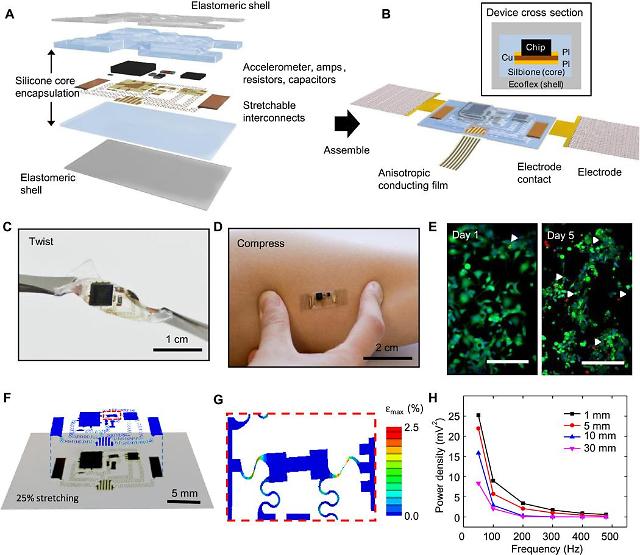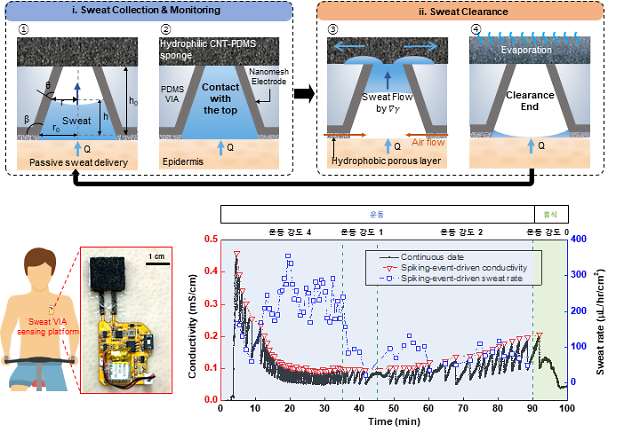
[Courtesy of Science Advances]
An international research team involving South Korean scientists claimed to have developed a new device configured specifically for "mechano-acoustic" recording from the skin, capable of being used in nearly any part of the body.
The team said in an article published by Science Advances, a science journal, that the device exploits a thin, lightweight, low-modulus, and skin-compatible architecture to enable mechano-acoustic sensing. The device may create many opportunities in the precision recording of sounds and vibratory signatures not only of natural body processes but also of the operation of mechanical implants.
Physiological mechano-acoustic signals, often with frequencies and intensities that are beyond those associated with the audible range, provide information of great clinical utility.
Stethoscopes and digital accelerometers in conventional packages can capture some relevant data, but neither is suitable for use in a continuous, wearable mode, and both have shortcomings associated with mechanical transduction of signals through the skin.
"We report a soft, conformal class of device configured specifically for mechano-acoustic recording from the skin, capable of being used on nearly any part of the body, in forms that maximize detectable signals and allow for multimodal operation, such as electrophysiological recording," the article said.
Experimental and computational studies highlight "the key roles of low effective modulus and low areal mass density for effective operation in this type of measurement mode on the skin", it said.
"Demonstrations involving seismocardiography and heart murmur detection in a series of cardiac patients illustrate utility in advanced clinical diagnostics," the article said.
Speech recognition and human-machine interfaces represent additionally demonstrated applications, it said, adding broad-ranging uses are possible for soft, skin-integrated digital technologies that can capture human body acoustics.
Potential clinical applications include heart rate variability analysis, beat-to-beat assessment of the pre-ejection period, and left ventricular ejection time, the article said.
Body sounds, such as snoring, respiration, and gastrointestinal tract movement, are also of some interest, it said.
"In many cases, fully wireless capabilities in data transfer, onboard data storage or processing, and integrated power supply will be necessary, particularly for applications that require continuous, untethered operation."
Aju News Lim Chang-won = cwlim34@ajunews.com




